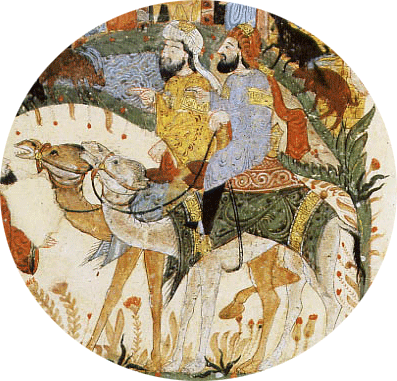
One of the most entertaining Arabic compendia on animal life, taken in the loose sense of the term for things that breathe or are thought to breathe, is the Hayât al-Hayawân (Life of Animals) of the Egyptian savant Kamâl al-Dîn Muhammad ibn Mûsâ al-Damîrî. Writing a century before Columbus discovered America, al-Damiri spins stories about animals with a variety of folklore about uses of animal products and parts. A scientist would no doubt shudder at the magical and literary focus of the text, only occasionally finding description useful today. A partial English translation was made by a British officer, Lieutenant-Colonel Jayakar, and published in two volumes in 1906 and 1908 in India. Unfortunately, this text is virtually inaccessible. I have looked at two copies, one in the New York Public Library and the other at the Library of Congress, and only with trepidation have I turned the fragile pages in this poorly bound volume. So far there is no digital version, which is a shame, since it is a delight to read.
Our author was a prolific copyist, quoting from over 800 other authors and providing a thousand entries, some simply an animal’s name and its more common synonym. Ironically, Jayakar’s Victorian sensitivity makes the translation as much an oddity as the primary work. Like other literary savants in the Arab world, al-Damiri is not squeamish when it comes to erotic and scatalogical innuendos. But there was a linguistic hex on translating sex with stiff upper-lipped officers like Jayakar. Even when camels did it. Consider the following excerpt, in which pedantic Latin allows the translator to be scrupulous to a fault:
The stallion camel covers the female only once a year, sed diu initum prorogat et pluries semen in feminam immittit, and on that account it is subsequently affected with languor and weakness.
The only thing left out of this passage is the Viagra. But there’s more Latin to come.
The flesh of camels and that of mountain sheep a year old is all of a poor or inferior kind. If the hair of camels is burnt and sprinkled over flowing blood, it checks the flow of blood. If the ticks infecting camels are tied up in the sleeve of one affected with excessive love, his love-madness will disappear. If one who is drink, drinks a little of a he-camel’s urine, he will become sober instantaneously. Its flesh increases the venereal power and acts as an aphrodisiac. The urine of camels is beneficial in swelling or inflammation of the liver, and in increasing the sexual power. Si qua mulier, tres dies, post menses, medulla ossis cruralis cameli, vel gossypio vel lana involuta, usa erit, recurreritque ad actionem initus, quamvis sterilis, illa concipiet.
So next time you have had too many tequillas, head for the nearest camel and make sure it gets pissed off.